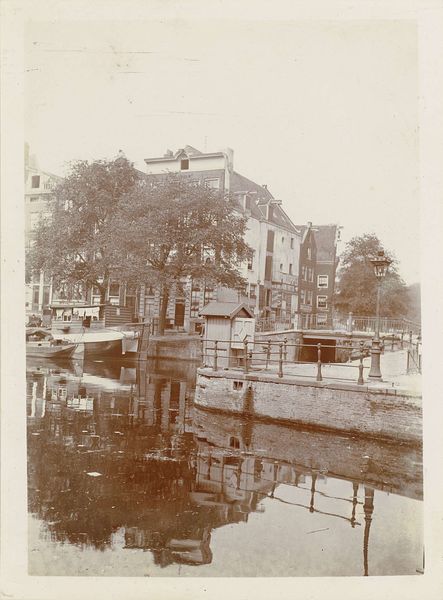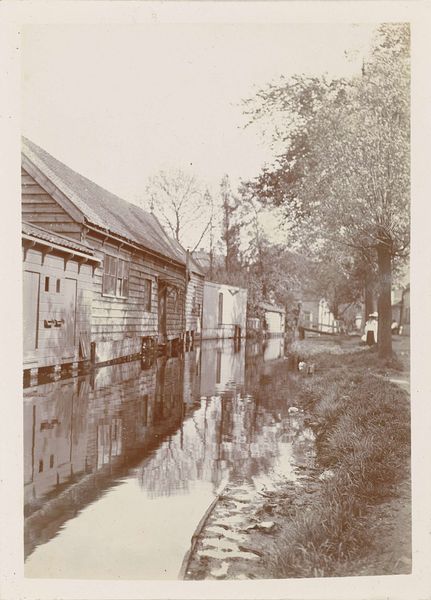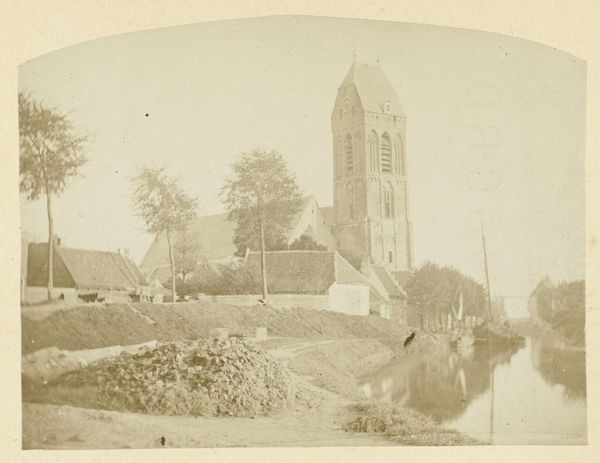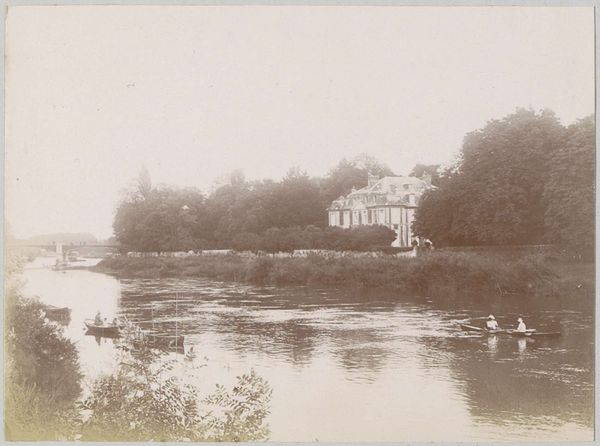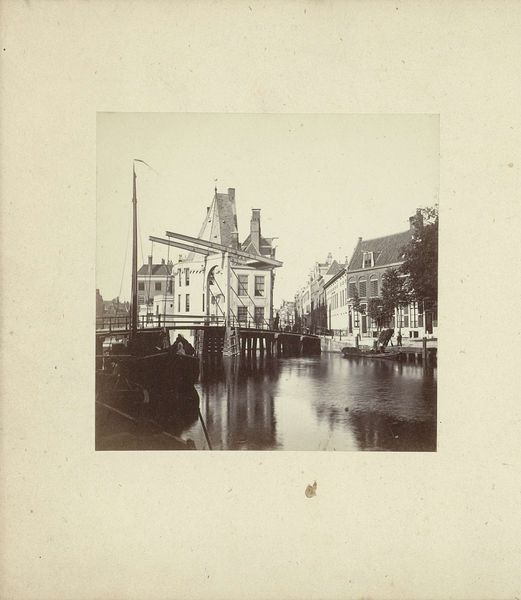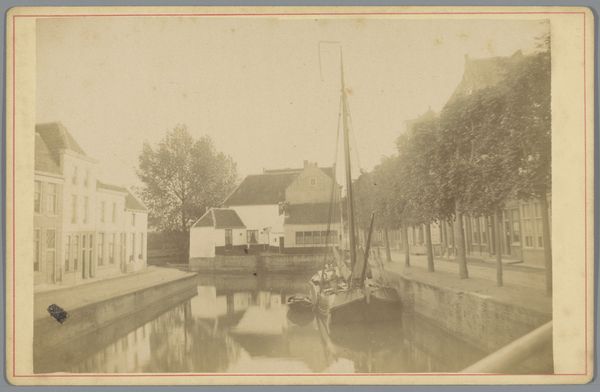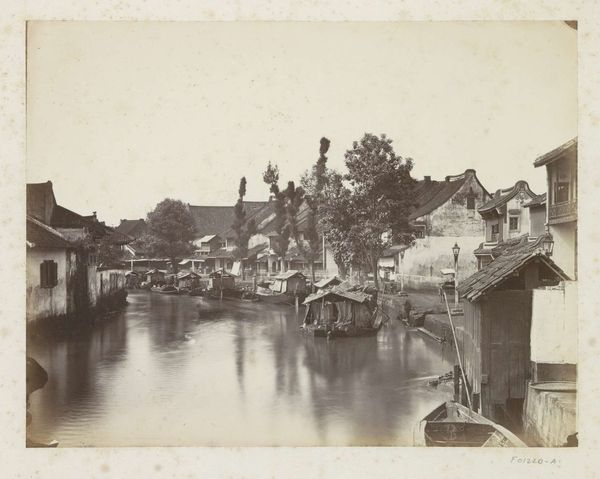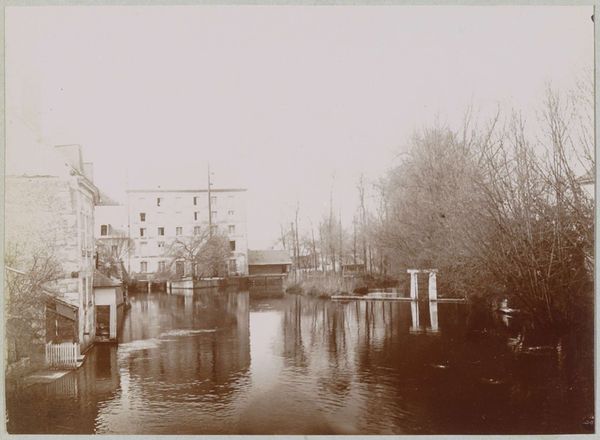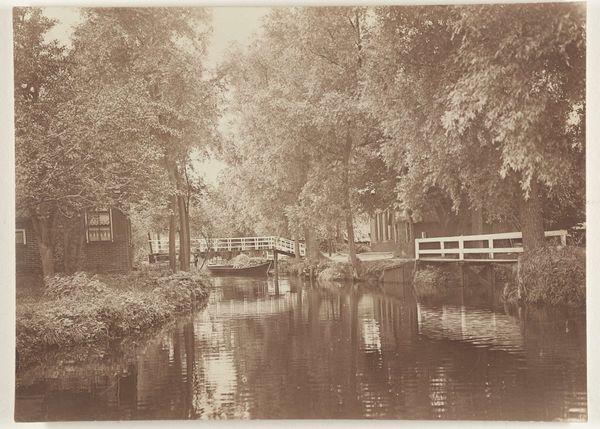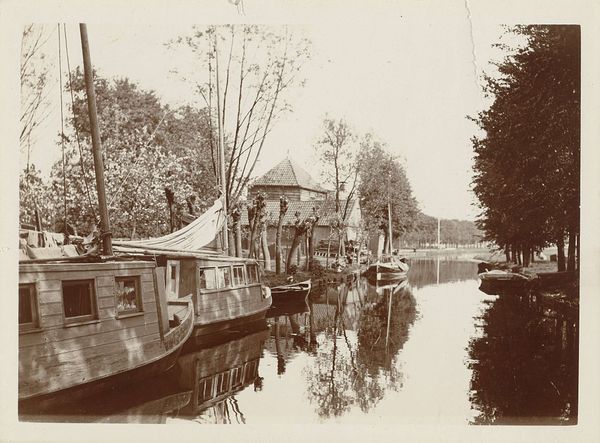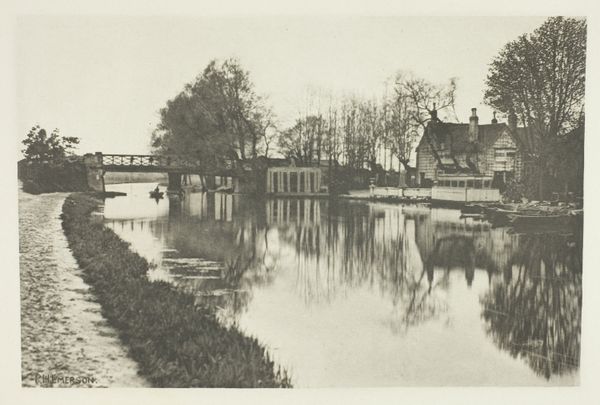
Dimensions: height 152 mm, width 109 mm
Copyright: Rijks Museum: Open Domain
Curator: This photograph, a gelatin silver print, captures a view of a canal in Edam with two boats and the Speeltoren in the distance, dating back to 1904. The artist is James Higson. Editor: There's a serenity to it, wouldn’t you agree? A certain calmness radiating from the reflections on the water. It's as if time is standing still. Curator: Absolutely, and that tranquility can be seen through a particular lens. Edam, as part of the Waterland region, presents a very specific dynamic in early 20th-century Holland, negotiating its relationship to rising sea levels and economic power centered in Amsterdam. These canals are not merely scenic; they are part of the landscape of power and struggle. Editor: I'm immediately drawn to the Speeltoren, the clock tower. Towers, throughout history, symbolize the connection between the earthly and the divine, a point of access to something higher. In this photograph, it serves almost as an aspirational symbol. Curator: It’s compelling that you interpret the clock tower that way, because one could also consider that such architecture equally serves to exert authority. Who controlled time, after all, held significant sway. Consider, then, this visual symbol within the rise of industry and its emphasis on productivity at the time. Editor: A darker reading, perhaps, but an intriguing one! Regardless, there's still something universal in the way the image captures the mirrored image. That doubling, is there also something symbolic there? Curator: Definitely! It prompts thinking about issues of duality and social and economic inequalities reflected in this scene. I can't help thinking, what has remained and what has disappeared of that era? Editor: The ripples of time, just like on the water! Well, seeing this photographic moment as a landscape, an identity, and an aspiration provides many layers to this early landscape, both universal and contextual. Thank you. Curator: Indeed, it gives new insights. A reminder of how seeing, both then and now, is profoundly impacted by perspective.
Comments
No comments
Be the first to comment and join the conversation on the ultimate creative platform.
